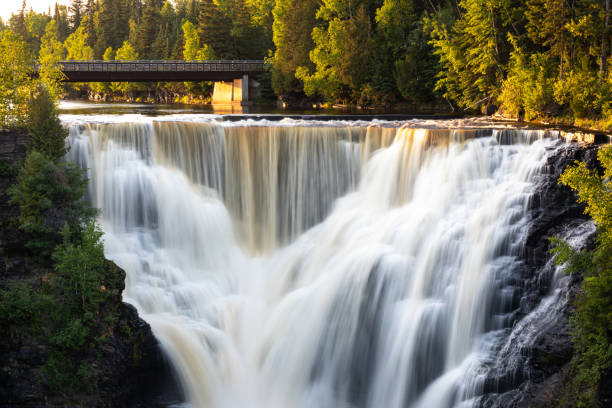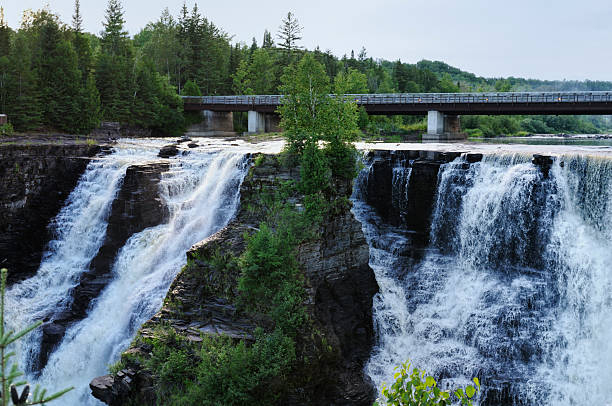Kakabeka Falls
Kakabeka Falls is a waterfall on the Kaministiquia River in the municipality of Oliver Paipoonge, Ontario, 30 kilometers (19 miles) west of the city of Thunder Bay. The falls cascade 40 meters (130 feet) into a valley created out of the Precambrian Shield by meltwater after the last glacial maximum. Because of its magnitude and accessibility of access, it has earned the moniker "the Niagara of the North". The falls' rock wall and the escarpments around the gorge are mostly made of unstable shale and are disintegrating. These rocks support delicate plants and hold some of the oldest fossils on the planet, dating back 1.6 billion years. Along with being home to some of the oldest fossils in the world, the spot is also one of the traditional fur trade routes of the Voyageurs.
Going into the gorge below the falls is not permitted due to the brittle granite. The name "Kakabeka" is derived from the Ojibwe word gakaabikaa, which means "waterfall over a cliff". The National Gallery of Canada owns the most renowned picture of the falls, which was created by Lucius Richard O'Brien in 1882. Frances Anne Hopkins, a well-known historical painter recognized for her depictions of Canadian life, depicted the portage around the falls in 1877. "The Red River Expedition at Kakabeka Falls, Ontario", one of her paintings, depicts the Red River Expedition of 1870 portaging around the falls on its way to the Red River Colony to arrest Louis Riel.
Location: Oliver Paipoonge, Ontario, Canada












